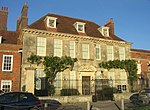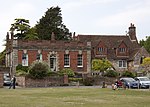Royal School of Church Music

The Royal School of Church Music (RSCM) is a Christian music education organisation dedicated to the promotion of music in Christian worship, in particular the repertoire and traditions of Anglican church music, largely through publications, training courses and an award scheme. The organisation was founded in England in 1927 by Sir Sydney Nicholson and today it operates internationally, with 8,500 members in over 40 countries worldwide, and is the largest church music organisation in Britain.The RSCM was originally named the School of English Church Music and was only open to members of the Anglican Communion; today it is an interdenominational organisation, although it is still overseen by the Church of England.Choirs affiliated with the Royal School of Church Music often wear the RSCM medallion, which features a picture of Saint Nicolas, its patron saint.
Excerpt from the Wikipedia article Royal School of Church Music (License: CC BY-SA 3.0, Authors, Images).Royal School of Church Music
North Walk, Salisbury Harnham
Geographical coordinates (GPS) Address Nearby Places Show on map
Geographical coordinates (GPS)
| Latitude | Longitude |
|---|---|
| N 51.0662697 ° | E -1.7970334 ° |
Address
North Walk 27
SP1 2EJ Salisbury, Harnham
England, United Kingdom
Open on Google Maps









